“What’s the best win con in commander?”
I always find the term “win con” (short for win condition–presumably a card or combination of cards that are both necessary and sufficient for winning) a bit frustrating. It’s a result of people asking me about things like what my win con is in a draft deck with 14 creatures. I think a lot of players get the idea that you need to have some precise plan that revolves around specific cards dedicated to ending the game, when in reality, any random creature can win a game by attacking.
However, I think this mindset largely comes from Commander, and it does have a little more merit there. While you can win by attacking with whatever, there’s a lot of life at a Commander table. Odds are low for you winning a game by attacking with a 3/2, before someone else wins by executing some specific plan that actually ends the game.
So, for the purpose of this article, I’m going to accept that “win cons” are a real thing which have some merit in Commander. That’s not to say all decks need specifically identifiable win cons–but it is how most decks operate.
Anatomy of a Win Condition
So what are the best wins cons, and what does it means to be the best win con, and how do you evaluate win cons relative to each other?
In Magic, there are more costs and benefits to specific cards than we can realistically consider. For example, if Red Elemental Blast and Pyroblast are heavily played, then being blue makes a win condition less reliable. But if I were to list all the relevant metrics for evaluating a win condition, “isn’t blue” wouldn’t make the list, though “difficult to interact with” broadly, might. This is to say I don’t believe I’m going to be able to cover everything, or introduce a system that can output some kind of absolute score of the quality of a win con. But, I hope to offer some things to consider when evaluating these.
Some top level, important aspects to consider:
How many cards do you need to assemble for your win con?
This question sounds pretty simple, but it’s somewhat complicated. For example, Thassa’s Oracle plus Demonic Consultation is a two-card win condition. Witherbloom Apprentice plus Chain of Smog is another two-card win condition. However, in a deck with Thassa’s Oracle, Demonic Consultation, and Tainted Pact, you need A+(B or C), which is easier to set up than a combo that has to have exactly A+B, such as Witherbloom Apprentice and Chain of Smog (assuming you’re not playing another piece like Professor Onyx).
The amount of mana required is also kind of a part of the combo. I say kind of because I think if you’ll always have enough mana to play your combo before you actually assemble it, then the cost isn’t much of a barrier. So, the fact that you technically need the UUB to cast Thassa’s Oracle and Demonic Consultation isn’t noteworthy, while “some way to get Professor Onyx onto the battlefield” might be a relevant part of the Professor Onyx–Chain of Smog combo.
Another question here is how your commander fits into the card count. For example, Malcolm, Keen-Eyed Navigator–Glint-Horn Buccaneer is a two card combo, but if Malcolm is your commander, you only have to actually draw one combo piece. That’s pretty good, but it still requires more setup than Inalla, Archmage Ritualist plus Spellseeker. With this combo, you merely need to have Inalla in your command zone, you don’t need to cast it, and you can win if Spellseeker is the only card in your hand, making it a one-card combo.
Kind of.
That brings me to another piece of the puzzle.
How much space in your deck does your combo require?
Thassa’s Oracle plus Demonic Consultation requires no additional cards in your deck–if you have those two, the contents of your library are irrelevant.
This is different than something like Inalla and Spellseeker, where you need all the right cards that you end up searching for with Spellseeker to execute your “one card” combo. The combo ends up requiring something like eight specific cards in your deck.
Protean Hulk, Cephalid Illusionist, Hermit Druid, and Goblin Recruiter are other good examples of cards which offer win conditions that only need one card, or one card combined with one of several cards that can do what you need with the one card. This is for uses like sacrificing or destroying Protean Hulk or repeatedly targeting Cephalid Illusionist, but that have a hidden cost of requiring several specific cards in your library.
The cost of combo pieces in your library that you don’t need to draw or cast is hard to evaluate. It depends on whether these cards have independently useful functionality when drawn, and how close their functionality is to whatever you might ideally be playing if you didn’t have to play this card for your combo.
Another metric is how easy is it for your opponents to stop your win con, as I alluded to early. Hermit Druid is a one card win con that costs several cards in your deck, but it has some critical vulnerabilities–it has summoning sickness unless you combine it with something that removes that, and it’s a one toughness creature, so it dies to anything that damages creatures or any creature removal. It also has to use an activated ability, so it can be stopped by anything that prevents creatures from using abilities, and it uses the graveyard to win, so it can also be stopped by anything that attacks graveyards. It’s about as easy to interact with as a win con can be.
On the other hand, Thassa’s Oracle plus Demonic Consultation, only uses the stack, in that you don’t really care if the Thassa’s Oracle itself is killed. It does have some additional vulnerabilities though–there’s a triggered ability which can be Stifled or otherwise prevented with a Torpor Orb effect. Also, Tainted Pact and Demonic Consultation are instants, and instant is the card type most likely to be able to be countered by blue cards like Flusterstorm and Dispel.
Fragility in Win Conditions
Another side of this I think doesn’t get enough consideration is what I call exposure, which is a measure of how bad it is for you if your combo is prevented. Thassa’s Oracle is a high exposure combo, in that you have to exile your library before you know for sure that no one can force you to draw a card to stifle your Thassa’s Oracle trigger. If your combo is prevented in this way, you aren’t just temporarily thwarted, you almost certainly lose the game.
You can add pieces to the combo to decrease exposure–you can play something like Silence, Grand Abolisher, or Defense Grid to stop your opponents from interacting, but that adds another piece to the combo.
To some extent, exposure is contextual depending on your deck. If your deck is entirely dedicated to playing to a single win con, and you have no game plan if part of that is exiled, then regardless of how much exposure your combo naturally presents, it’s high exposure in your deck. You generally shouldn’t try to win with it unless you’re confident it’ll work, because it’s your only plan.
Meanwhile, there are a lot of creature decks with redundant creatures combos where they can present a win. If it’s stopped, they’re just out whatever card was answered and they can try to find a different combo. Those combos are low exposure.
Personally, I highly value low exposure combos, because I think high exposure combos have a lot of hidden setup costs or are inherently higher variance than I’d like.
The mana invested in your combo is another critical element, but again, one that can be someone tricky to compare between different combos–specifically, some combos need a lot of mana all at once, while others allow you to spread how you spend mana across multiple turns. Ideally, you’d want to be able to choose–sometimes you don’t want to play any part of your combo until you’re ready to play all of it, but other times it can be nice to be able to put one piece in play and then cast the other half later, especially if each part cots 3+ mana. A combo that requires a three mana card and a four mana card is generally easier than a combo that requires a six mana card and a one mana card, since you don’t need as many lands or other mana sources to play it, but on the other hand, you might prefer a six mana card and a one mana card if you have time to play the six mana card first, as then you’ll only need to devote one mana to threatening a win, and you’ll be able to use the rest of your mana to protect it.
This depends on how good you are at protecting it, how much interaction you expect from your opponents, and how important speed is.
A Look at the Combo Landscape
With all this in mind, I’d like to evaluate some popular combos:

Dockside Extortionist Loops
Dockside Extortionist is one of the most powerful cards in Commander, and just by itself, it will typically generate an enormous mana advantage. But, tt’s also part of several infinite combos. There are several cards which allow you to spend mana to trigger it again in a way where you make more mana than you spent, and therefore can repeat the loop infinitely. Common ways to do this include:
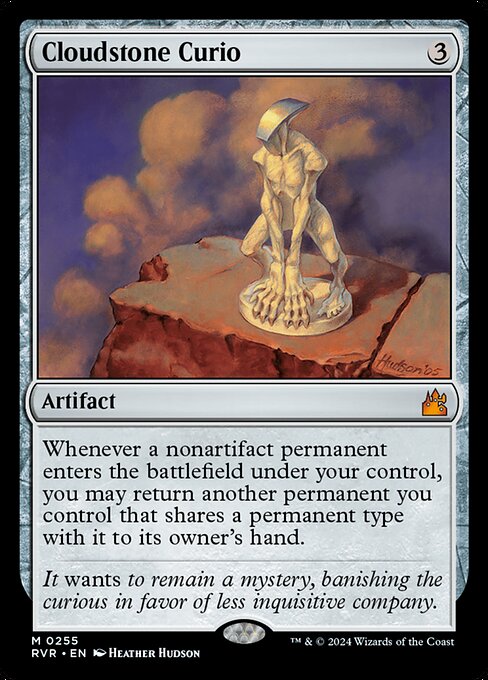
Combine any other creature, ideally one that’s cheap, where you generate enough treasures to cast both creatures. Each creature bounces the other one, and you repeat as desired. If you have a creature that does something that can win the game when it enters the battlefield, you can also loop that, either directly with Dockside or after generating infinite mana by looping Dockside and something cheaper
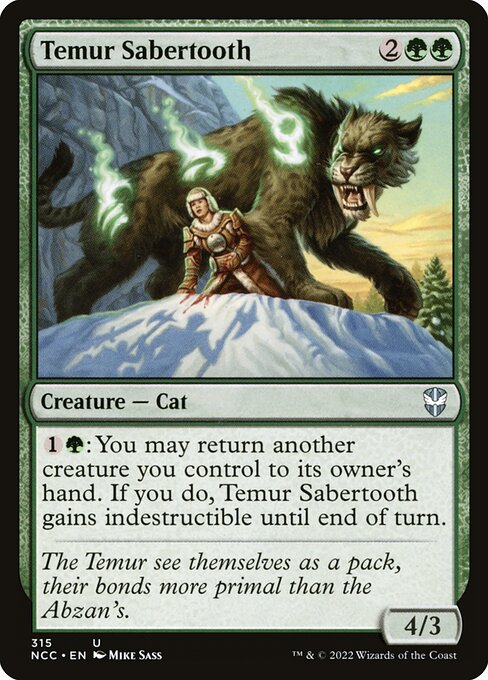
As long as Dockside is making 5 treasures, you can use Temur Sabertooth’s ability to bounce dockside for two mana, replay dockside for two mana, and repeat with more treasures in play than you started with.
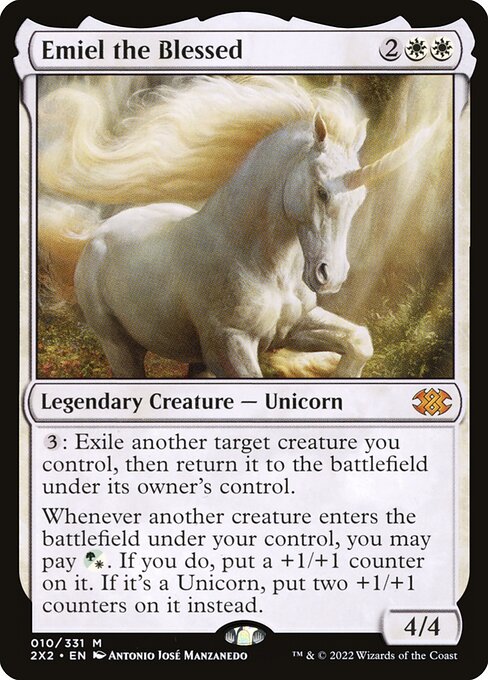
As long as Dockside is making at least 4 treasures you can profitably blink it with Emiel.
Temur Sabertooth and Emiel can both work with any creature with a useful etb to turn the infinite mana generated into something that wins the game.
Dockside loops are good because all of the cards are independently functional to strong, and if your opponent prevents them, you haven’t risked or invested much. This is generally a 3+ card combo, in that you need Dockside Extortionist, the thing that lets you reuse it, and something that lets you convert the mana into a win. But, it’s not exactly a three card combo in that it really requires A (Dockside)+(B/C/D) (Curio, Sabertooth, Emiel) depending on how many of those you’re playing+(E/F/G/H/I/etc) as a huge number of different cards can work as the last piece. The redundancy makes it easier to find all the pieces. Incidentally, it’s technically possible to play other cards that can fill Dockside’s role in some of these combos, if you can make cards like Cloud of Faeries or Peregrine Drake sufficiently mana positive, so you can make this a bit more robust.
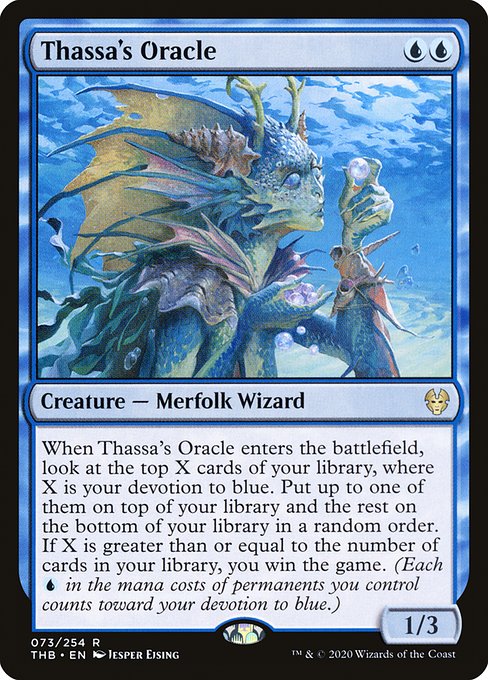
Thassa’s Oracle is kind of viewed as the gold standard for win conditions in cEDH–it only requires two cards and 3-4 mana and it has to be interacted with on the stack. It also only requires Blue and Black, which I think accounts for a lot of its popularity–both colors are very good at finding the combo and don’t have other good ways to win. I’ve seen a lot of people suggest that Thassa’s Oracle itself should be banned, but I increasingly don’t really think so–I see it as one of many two card combos with its own strengths and weaknesses–I think a large portion of the games that are won by the combo were realistically actually won by another card, like Mystic Remora or Rhystic Study.
That said, the combo requires few pieces that are easy to find, relatively hard to interact with, and it requires no additional cards in deck. The only real problem with it is that it’s high exposure, but realistically, most of the time it’s stopped it’s stopped by someone countering one of the cards, and not in a way that actually kills you. Also, it’s cheap enough that adding a third piece like Silence to decrease the risk is totally viable.
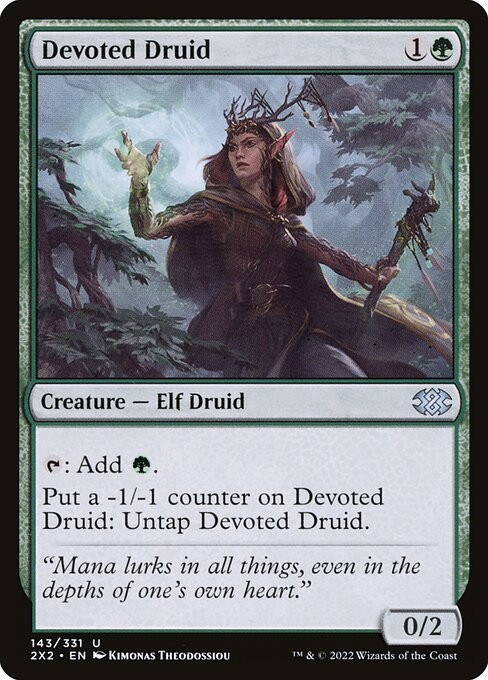
Devoted Druid Combos
There are a lot of two card combos with Devoted Druid that make infinite mana. The best is probably Devoted Druid plus Swift Reconfiguration, because this effectively gives the Devoted Druid haste, because as a non creature summoning sickness no longer applies. This isn’t a win, you need another step to go from infinite mana to a win, and it can be stopped by removal. However, it’s comparable to Thassa’s Oracle Demonic Consultation in that it’s a two card combo which requires only 3 mana to set up. It has the advantage that you can play the Devoted Druid whenever and each card is independently pretty functional on their own. The question is how difficult it is to bridge the gap between infinite mana and a win.
The good news here is that several commanders can serve as this missing piece, which makes this function more like a two card combo than a three card combo. Thrasios, Triton Hero is a great commander to utilize Devoted Druid combos, because they generally function as two card combos, with the benefit that there’s a good amount of redundancy and that they’re very low exposure. Nothing goes horribly wrong if someone kills your Devoted Druid. Technically, one could argue that this takes some amount of deck space, in that all Thrasios does is draw your deck, and you have to be able to win from there. But’ I’m not convinced that “I need to include cards in my deck such that if I have infinite green mana and every card in my deck in my hand” is a real deckbuilding constraint.

Underworld Breach
Underworld Breach is a weird one, because the answer to how many cards it needs to combine with to translate to a win is very murky. If you’ve been playing a game for awhile and you have a variety of strong cards in your graveyard and your deck is built to take advantage of Underworld Breach, it’s a one-card combo in that you don’t need anything else in particular in play or in your hand to win. How much mana does it cost? Well, that also depends on what’s in your graveyard. How much space does it take in your deck? Well, you have to have some way to win that it’s giving you access to, but you were probably playing that anyway.
This is a very popular card to combine with Thassa’s Oracle so you can get another shot if someone stops your first Oracle attempt without killing you.
It’s also a card that you can play in your deck to turn Intuition into a “one card win con” where all you need to do is cast Intuition and find Sevinne’s Reclamation, Underworld Breach, and Lion’s Eye Diamond, and you can probably figure it out from there somehow, especially if your deck contains Brain Freeze or Grinding Station.
Broadly, I’d say Underworld Breach is low exposure, but relatively slow. It doesn’t necessarily require any particular setup, but it does kind of require that a bunch of stuff has happened. It’s vulnerable to enchantment removal, Rule of Law effects, and graveyard hate, which makes it unreliable as a primary plan, but it’s a fantastic backup plan.
As I alluded to early, I don’t have much of a conclusion. There are a lot of viable ways to win, and a lot of the time, the cards you use to get into a position to win is going to matter more than the cards that actually end the game. Hopefully this helps when you’re thinking about which combos you want to include in your decks, which is definitely a question I’ve found myself running into pretty often.
Sam Black (any) is a former professional Magic player, longtime Magic writer, host of the Drafting Archetypes podcast, and Twitch streamer. Sam is also a Commander Cube enthusiast, and you can find Sam’s cube list here. For anything else, find Sam on Twitter: @SamuelHBlack.

